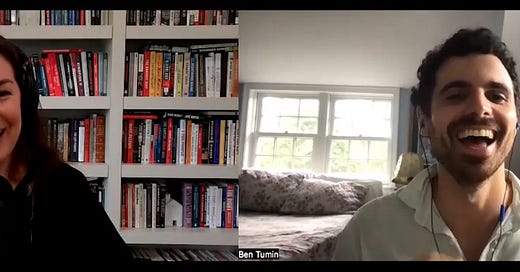How Conservatives Cut Their Teeth on Campus
Right-wing student activism in the 1960s and how it shaped modern conservatism, with Dr. Lauren Lassabe Shepherd
With school starting back up, and with it the inevitable cries from conservatives that universities are too woke, I spoke with Dr. Lauren Lassabe Shepherd, a historian and teacher at the University of New Orleans.
In her new book, Resistance from the Right: Conservatives and the Campus Wars in Modern America, Dr. Shepherd argues that conservatives have long held an influential presence on campus. And as she details in conversation, we can trace some of modern conservatives’ tactics back to their battles against Black Studies curricula in the 1960s.
A condensed transcript edited for clarity is below. Paying subscribers can also listen to the audio of our conversation, which includes further discussion of anticommunism and the war against plurality, Dr. Shepherd’s personal connection to the history, and more:
How Conservatives Cut Their Teeth on Campus
Listen now (29 mins) | Audio of my conversation with Dr. Shepherd
Ben: Dr. Shepherd, thank you so much for being here.
LLS: Thank you. It's great to talk to you.
Ben: To begin, can you discuss why after World War II, right-wing leaders thought they needed “to subvert the leftist academy with ideas and agents of their own”?
LLS: Sure. Conservative intellectuals like William F. Buckley Jr., who later founded the National Review, felt like they weren’t being represented in higher education. While Buckley was a student at Yale, he became the president of what was called the Intercollegiate Society of Individualists, known today as ISI (the Intercollegiate Studies Institute).
ISI was a conservative organization whose whole purpose was to produce future faculty or to send people to law school and journalism programs and get conservative messages out. Leaders of the conservative movement cut big checks for ISI. They paid for students’ entire graduate careers and travel and gave them stipends for attending these sorts of colloquia where they’d all get together.
Editor’s note: For more info on conservative leaders at the time, check out the interview below…
So there was lots of cash available from anti–New Deal businessmen. The whole idea was to subvert what they considered to be leftist indoctrination in universities.
Ben: You discuss the “conservative countersphere” that these figures helped create. I like the quote you include from another scholar named Mark Major, who describes movement leaders on the right and on school campuses as “often privileged insiders masquerading as aggrieved outsiders.”
LLS: I conducted interviews with former student activists, and many of them really did believe themselves to be aggrieved intellectual minorities; that they were victims of persecution in the academy.
On college campuses around the country, they created their own literature, which they considered “underground.” It definitely wasn’t underground—their publications were funded directly in some cases by campus trustees—but their goal was to create an alternate version of the official campus newspaper and to spread their own messages. Students on the right wanted to appear like a representative voice, even though less than 20% of college students self-identified as conservative.
And unlike most students, they thought it was really important to get involved in school government. A lot of conservative activists cut their teeth in school elections.
Ben: One of the other main student groups you talk about is the Young Americans for Freedom (YAF). How did they start forming a coalition, united around... well, not much?
LLS: YAF was founded by Buckley at his family estate in Sharon, Connecticut in 1960. It was basically an anticommunist organization, whose main function was identifying conservatives on campus.
Ideologically, it didn’t matter if you agreed with their anticommunist stance. Whether students were more traditionalist, libertarian, evangelical, or what have you, YAF’s goal was to build a “majority coalition,” pulling students together by the least common denominator: hatred of the left. Their goal was just to stand in the way of leftist students’ calls for more representative curricula.
Editor’s note: For more info on the origins of Black Studies, check out the interview below…
Off campus, YAF sent representatives to lobby Congress and undermine progressive changes. This included students like David Keene, who would go on to become the president of the NRA.
Ben: Another example of how groups like ISI and YAF operated occurred at Columbia. Could you please talk about what happened there, and how right-wing groups allied with authority figures?
LLS: In the spring of 1968, following the assassinations of Dr. Martin Luther King Jr. and Robert F. Kennedy, there was a sit-in at Columbia.
One of the main issues was that Columbia wanted to build a new gym in Morningside Park that would block the university’s view of neighboring communities in Harlem. The administration said we're not trying to hide this neighborhood. In fact, anyone who lives in Harlem is welcome to have free access to the gym! But the way that the building was designed, students would be entering from the top of the building and neighbors from below. It just wasn’t a good look.
So student groups launched a strike. They occupied different buildings on campus for several days, including the Low Library. In response, conservative student groups created a blockade outside the building and tried to prevent anyone from bringing supplies, food, or aid to students inside. (Later George H. W. Bush and Trump administration attorney general William Barr was one of them.) And it got really nasty, with fistfights breaking out between the students.







